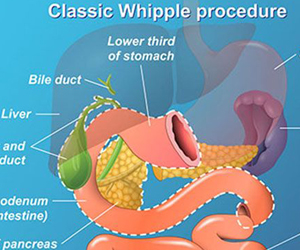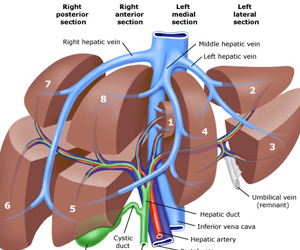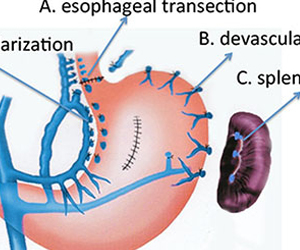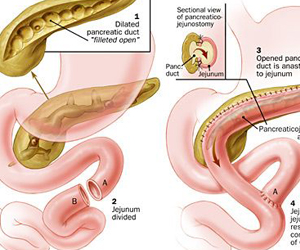Hepatobiliary & Pancreatic surgery
 This is a dedicated subspecialty concentrating on the diseases involving the liver and pancreas. The complicated anatomy along with high vascularity necessitates extensive experience and skill in treating them. Specialised equipment like vessel sealers and tissue dissectors like CUSA are necessary for proper identification and preservation of important structures and reducing bleeding .Liver and pancreas being essential not only for digestive system but also for entire metabolic activity of the body, makes them target for life style related diseases. This also necessitates expert perioperative supportive care.
This is a dedicated subspecialty concentrating on the diseases involving the liver and pancreas. The complicated anatomy along with high vascularity necessitates extensive experience and skill in treating them. Specialised equipment like vessel sealers and tissue dissectors like CUSA are necessary for proper identification and preservation of important structures and reducing bleeding .Liver and pancreas being essential not only for digestive system but also for entire metabolic activity of the body, makes them target for life style related diseases. This also necessitates expert perioperative supportive care.
 These are surgical procedures aimed at removal of a portion of the diseased liver while safely preserving the normal part of the liver. Anatomical resections of the liver aim at utilising the knowledge of internal anatomy of the liver for a safe surgery with less blood loss. Depending on the portion and volume of liver removed, these are variously named as either left or a right hepatectomy or a segmental resection. Some small peripherally placed tumours can be treated by wedge resection laparoscopically. Even large tumours dangerously close to major blood vessels can be removed using techniques like vascular exclusion and autotransplantation.
These are surgical procedures aimed at removal of a portion of the diseased liver while safely preserving the normal part of the liver. Anatomical resections of the liver aim at utilising the knowledge of internal anatomy of the liver for a safe surgery with less blood loss. Depending on the portion and volume of liver removed, these are variously named as either left or a right hepatectomy or a segmental resection. Some small peripherally placed tumours can be treated by wedge resection laparoscopically. Even large tumours dangerously close to major blood vessels can be removed using techniques like vascular exclusion and autotransplantation.
 This is the surgery aimed at reducing the bleeding risk for patients suffering from a condition called as portal hypertension. Since these patients have engorged abdominal blood vessels, the aim is to reduce the excessive blood flow to prevent bleeding but carefully preserving adequate vascularity for full functional recovery of patients. Shunt procedures divert the excessive flow to systemic circulation and reduce portal pressure while devascularisation aims at reducing the blood flow directly by closing the engorged vessels. These are procedures are offered to patients who have large varices or repeated GI bleeding not responding to endoscopic techniques.
This is the surgery aimed at reducing the bleeding risk for patients suffering from a condition called as portal hypertension. Since these patients have engorged abdominal blood vessels, the aim is to reduce the excessive blood flow to prevent bleeding but carefully preserving adequate vascularity for full functional recovery of patients. Shunt procedures divert the excessive flow to systemic circulation and reduce portal pressure while devascularisation aims at reducing the blood flow directly by closing the engorged vessels. These are procedures are offered to patients who have large varices or repeated GI bleeding not responding to endoscopic techniques.
 This is the surgery needed in patients with chronic pancreatitis suffering from pain and repeated attacks of pancreatitis. The main reason for the above include obstructed pancreatic duct and presence of stones within the duct. The main purpose of the surgery is to bypass the obstructed pancreatic duct to small intestine along with removal of the stones. Patients typically have a long term relief of pain. Since further pancreatitis attacks are prevented, continued loss of pancreatic function is prevented, thus reducing the risk of diabetes in these patients. This surgery is more beneficial in patients who have multiple pancreatic stones and multiple strictures in the pancreatic duct which are not treatable by endoscopic stenting and ESWL.
This is the surgery needed in patients with chronic pancreatitis suffering from pain and repeated attacks of pancreatitis. The main reason for the above include obstructed pancreatic duct and presence of stones within the duct. The main purpose of the surgery is to bypass the obstructed pancreatic duct to small intestine along with removal of the stones. Patients typically have a long term relief of pain. Since further pancreatitis attacks are prevented, continued loss of pancreatic function is prevented, thus reducing the risk of diabetes in these patients. This surgery is more beneficial in patients who have multiple pancreatic stones and multiple strictures in the pancreatic duct which are not treatable by endoscopic stenting and ESWL.
